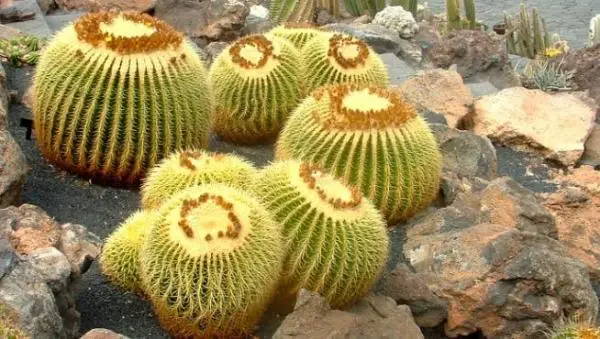Cacti can be found in many species, not only the best known with spikes but also others that bloom spectacularly and leave a beautiful specimen. The genus Echinocactus has 6 species of cacti originating in Mexico and the southern United States, but the truth is that they can be grown anywhere in the world if there are the right environmental conditions.
With the official name Echinocactus, it is better known by names such as mother-in-law’s seat, hedgehog cactus, golden barrel, golden ball, or cabochon. It is spherical in shape and has a very vivid shade of green, with very prominent edges and very marked areolas. Its spines are round and very strong, with a yellow or reddish color. It blooms in summer, and its flowers are red or yellow, but they only last 3 days. In the following article, we will explain the care of the mother-in-law seat cactus.
Main cares
- Location : it needs to be in a very sunny place as it is usually a desert plant. It can live perfectly indoors, but as long as it can get plenty of sun every day.
- Temperatures : the only requirement is that it can never be below 5ºC.
- Soil : the perfect one is one that has half of leaf mulch and the other half of coarse sand. If what you are going to plant is an already grown specimen, add a little lime to the soil to reinforce the thorns.
- Transplant : whenever you want to do it, it should be in spring.
- Watering : You don’t need a lot of water, just water when you see that the soil has dried out. You’ll always need more water in the summer than in the winter, when you probably won’t be watering more than a couple of times.
- Fertilizer : apply a mineral fertilizer low in Nitrogen every 15 days, but only during the summer.
- Pests and diseases : If you get botrytis it can be devastating, and it usually appears when you water too much.
- Multiplication : it is done by seeds and must be sown in spring.


